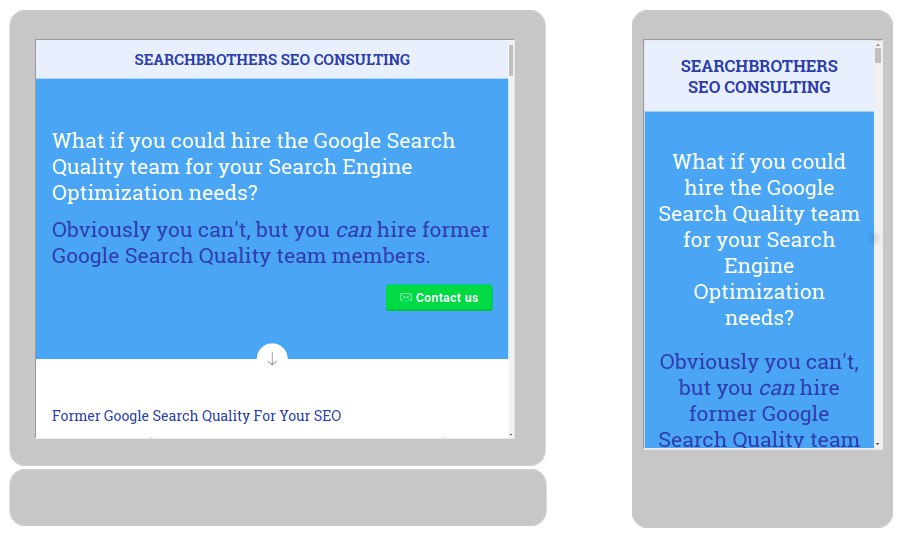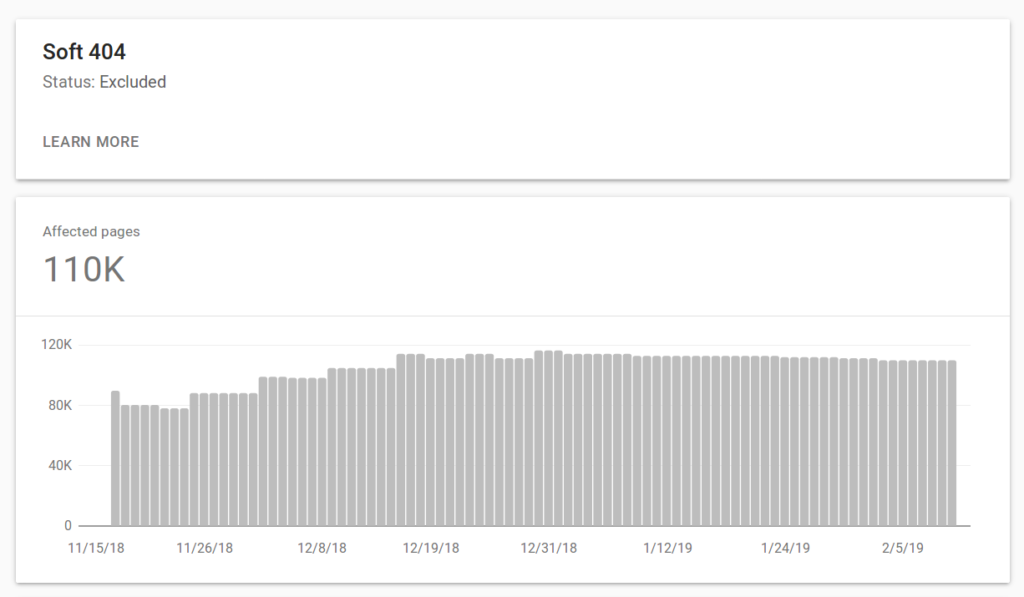Conflicting SEO Signals
Written by
Editorial TeamPublished on

Sites fail to live up to their full potential in Google Search because their on-page signals are conflicting, rather than consistent. These are the Top-5 most common pitfalls.
One of the most fundamental and consequential mistakes when it comes to SEO is failure to display consistent signals. As a result search engine bots and algorithms are frequently confused and unable to rank landing pages as prominently as they could. Few large online services are -due to the size and complexity- flawless in their set-up. At times providing a truly unique selling proposition can help to compensate for the conflicting SEO signals issue. Still in competitive niches sending conflicting signals over a prolonged period of time tends to have a devastating effect on Google search visibility. These are the most common five pitfalls to avoid.
Desktop-mobile parity
Google has moved to prioritized mobile indexing in early 2018 and by now most sites are primarily crawled by the Google Mobile bot. For sites maintaining different versions for desktop and mobile users Google has shared an extensive list of best practice. However the most important one is simple to follow: Mobile and corresponding desktop pages must contain the exact same content and technical signals. Anything less is bound to generate conflicting signals and confuse Google.

Desktop-mobile parity is an important step towards SEO signal consistency.
Content
The canonical link element is the best way to prevent duplicate content issues. If correctly applied, following the method “either to self or to desirable, indexable landing page” canonicals are almost always followed by Google. Even so if the previously mentioned rule isn’t followed strictly, say because canonicalized pages are at the same time noindexed, Google tends to distrust canonicals on a site level. Next thing Google ignores the canonical suggestion altogether. This is frequently clearly identifiably, for example if other then canonical landing pages outrank what should be the preferred version. When that happens content signals are at best much diluted. At worst pages of the same website which never were intended as landing pages compete against each other in SERPs. And because of lacking or poor optimization also negatively impact user signals, further confusing Google algorithms.

This dangerous scenario can be additionally magnified if pagination is needed at the same time. Again Google does their best to provide best practice guidance on how to indicate paginated content correctly. A similarly dire situation is frequently caused not by poor technical implementation but simply due to publishing irrelevant or SEO-content. That type of content is created to meet arbitrary word count targets with the sole purpose to serve as an artificial SEO signal which however lacks any actual purpose or justification. Experience shows this to be often the case with blogs maintained as a support channel next to the actual websites content. The odd great pizza recipe article on travel website dedicated to selling flight tickets and hotel reservations is a textbook example. It is merely off-topic, it’s utter nonsense. There are as so very often many shades of grey, however severe cases can even trigger a Google manual penalty for thin content giving the conflicting signals problem a whole new dimension.
Local & language versions
Any website targeted at multiple language and or regions must take advantage of indicating these to Google using hreflang correctly. Hreflang, when applied can greatly boost landing page visibility for the right audience, that Google may struggle to correctly identify otherwise, say German speaking users in Spain. That is of course if and when two vital criteria are met: 1. hreflang implementation needs to be flawless across all of the language version (don’t forget the x-default!). 2. the landing pages need to actually provide language specific content that resonates with the target audience. That means not only translated content but truly localized. Failure to live up to that standard inevitably produces conflicting and confusing signals to Google which in the end only work against the site.
Soft 404s
Not returning consistently 404 Not Found response for discontinued landing pages is yet another reason why conflicting SEO signals spell doom for any decent Google Search visibility. Occasionally it is the site set-up that’s causing the issue. Most frequently however is is the mistaken notion that doing the right thing and returning actual 404’s poses a disadvantage because of presumed, PageRank passing links pointing to non-existent pages. Returning 200 OK instead or 301-redirecting such pages, which is a common practice for large websites with a fast changing inventory has catastrophic consequences. First and foremost it tends to completely negate any positive users signals for Google. It is safe to assume users encountering pages that do not provide (any more) what they had been looking for bounce and return to Google Search to refine their queries. Or to look for another, better result. Thereby they indicate to Google this isn’t what they had been looking for, which over time inevitably pushes rankings down. Additionally, Google frequently notices such soft 404’s and stops trusting server responses on a site wide level. Chances are the issue will be raised a problem in Google Search Console, albeit at a time when it already is affecting the site rankings.

Error pages returning 200 Ok instead of a 404 Not Found response create Soft 404’s which Google distrusts.
Internal linking & redirects
Lastly it is often internal linking that causes conflicting SEO signals. Even though it bares great SEO potential internal linking is either neglected or used in a way detrimental to the websites Google rankings. That is particularly the case when meta=nofollow and rel=nofollow are used on trusted, internal links. That step taken in the mistaken assumption PageRank sculpting was a good practice, which it isn’t. It only reduces the internal vote of confidence as far as Google is concerned. Which is confusing given that these obviously are trusted landing pages. For most websites there are no legitimate reasons to apply nofollow at all.
That is however but one of the common internal linking pitfalls that create inconsistent SEO signals. Others are orphaned pages (legitimate landing pages not linked internally at all), linking to internal redirects, instead of the final destinations or worse yet maintaining redirect chains. All of these fail to reinforce positive SEO signals for Google, instead confusing Google Algorithms. Which then merely try to guess what the best landing page for a given query may be, often coming to a less than desirable conclusion.
These most obvious signals alone have the potential to greatly boost a websites organic rankings, if they are consistent. Or they can impact a site adversely though if they are sending confusing messages to search engine bots. The list of potential SEO pitfalls is of course much larger and includes also off-page signals. Which is another reason why the only way of maintaining consistent SEO signals is by regularly crawling the site as part of a website audit. Google Search Console input is in the process of great importance, since Google is likely to highlight issues holding the site back. However, Google Search Console data alone is insufficient for websites in competitive environments. Which is why third party tools such as DeepCrawl and Screaming Frog just to name a few of several market leading tools, must be used to crawl and analyze data. It is best practice to use a multitude of crawlers simultaneously, in order to verify SEO signal consistency. That is also when third party consultancy or an SEO agency bringing to the table SEO expertise and capable of challenging the status quo and rattling the sites setup is most likely to help align SEO signals into consistency.
If you want to learn more trick, be sure to check the slides from Fili’s session “Optimizing for Search Bots” at E-commerce Berlin Expo here.
Still not enough? Here is an interview with Fili about how Google will continue to adapt to changing user

Fili Wiese
SEO Expert at SearchBrothers.com
Fili Wiese is a renowned technical SEO expert, ex-Google engineer and was a senior technical lead in the Google Search Quality team. At SearchBrothers.com he offers SEO consulting services with SEO audits, SEO workshops and successfully recovers websites from Google penalties.


